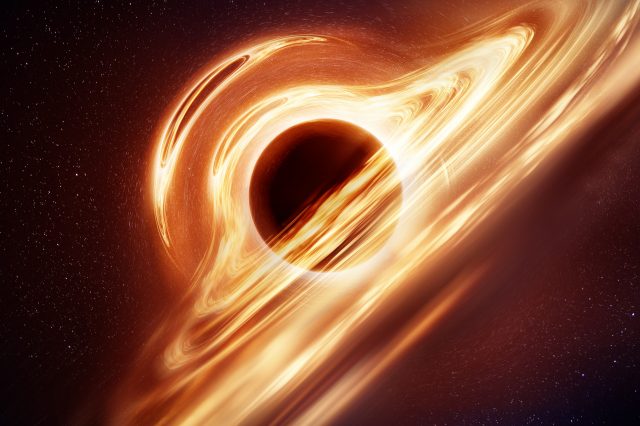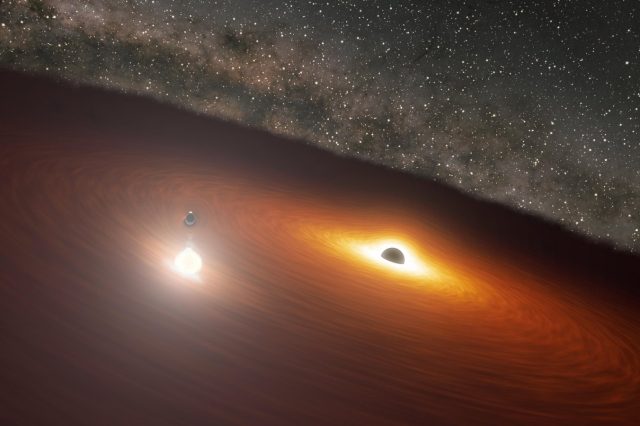A cosmic mystery 27,000 light-years away.
A peculiar cloud of gas in deep space is distorted oddly. According to astronomers, the shape of the cloud of gas is most likely influenced by a compact, massive, and dark object, predictably a black hole 100,000 times more massive than the Sun. A team of Japanese researchers led by Miyuki Kaneko of Keio University used data from the James Clerk Maxwell Telescope, operated by the East Asia Observatory, and the NAOJ (National Astronomical Observatory of Japan) Nobeyama 45-m radio telescope to identify an unusual cloud of molecular gas some 27,000 light-years away in the constellation Sagittarius.
In deep, mysterious space
The distorted cloud of glass is strange, not only because of its shape but because it seems to revolve around a space that lacks bright objects. The enigmatic tadpole shape of the gas cloud implies that it is being stretched as it revolves around a massive compact object. And when astronomers explore outer space, there is no lack of mystery. At the center of the cloud’s orbit are no bright objects that could be anywhere as large enough to hold the cloud of gas together gravitationally. This is why astronomers believe that the best object that can explain the odd and peculiar characteristics of this oddly shaped cloud of gas is a compact and massive object such as a supermassive black hole.
Black Holes
Black Holes are some of the universe’s most enigmatic but interesting objects. It is believed that every large galaxy in the universe has a supermassive black hole at its center. But we also know that some black holes travel through space, like lonely wanderers. A few years ago, astronomers estimated that there are around 40 billion billions black holes in the universe. But knowing more about them, or estimating how many black holes exist in the universe, is not easy because these objects do not emit light. The only way to verify their existence is by their interaction with objects around them.
This means that we are still in the “dark” when it comes to figuring out the number of Black Holes in our galaxy. To find out more about the oddly shaped cloud of glass that seems to interact with an “invisible” object in deep space, astronomers are planning to use one of the most powerful telescopes on Earth, the Atacama Large Millimeter/submillimeter Array (AMLA) to explore the region around the cloud of glass for faint telltale signs from the black hole, or other objects that might be located at the gravitational center of the Tadpoles orbit.
Have something to add? Visit Curiosmos on Facebook. Join the discussion in our mobile Telegram group. Also, follow us on Google News





